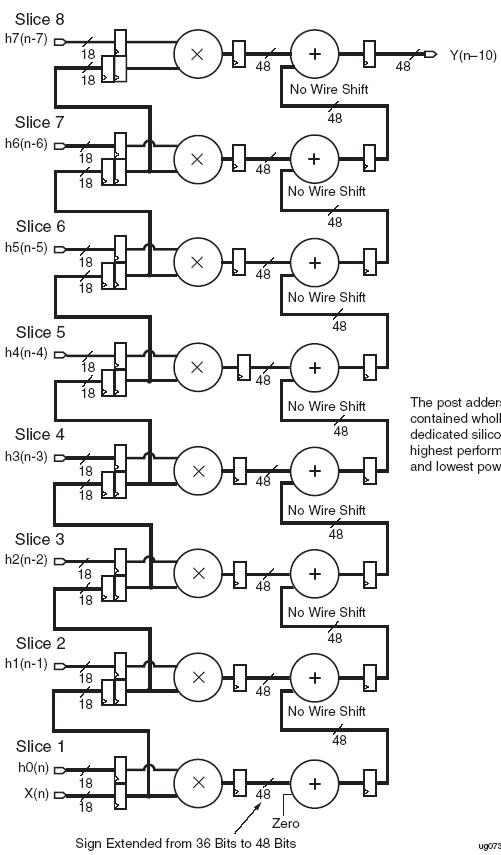alimassster
Junior Member level 3
dsp48
Hello friends
Imagine x as a continuous stream of input samples and y as a resulting stream
the sample delay logic is denoted by Z^-1, where the -1 represents a single clock delay.The delayed input samples are supplied to one input of the multiplier.coefficients (denoted by h0 to h(N-1)) are supplied to the other input of the multiplier Y is merely the summation of a set of input samples.
is merely the summation of a set of input samples.
Now my question
Cascading dsp48 blocks , how many clocks do we need to have a result in the output ?
And by cascading such these blocks if we need for example N clocks to feed multipliers with N inputs in an N tap FIR filter to calculate Y , then what's the difference between the parallel form and a single MACC based form ( there's an equal delay(number of clocks) in both forms)?
thx

Hello friends
Imagine x as a continuous stream of input samples and y as a resulting stream
the sample delay logic is denoted by Z^-1, where the -1 represents a single clock delay.The delayed input samples are supplied to one input of the multiplier.coefficients (denoted by h0 to h(N-1)) are supplied to the other input of the multiplier Y
Now my question
Cascading dsp48 blocks , how many clocks do we need to have a result in the output ?
And by cascading such these blocks if we need for example N clocks to feed multipliers with N inputs in an N tap FIR filter to calculate Y , then what's the difference between the parallel form and a single MACC based form ( there's an equal delay(number of clocks) in both forms)?
thx

